#Gévaudan
Text

Château de Mazembert, Gévaudan region of France
French vintage postcard, mailed in 1938 to Paris
#french#carte postale#sepia#chteau#photo#postkarte#tarjeta#mazembert#1938#ansichtskarte#château de mazembert#postkaart#ephemera#postcard#vintage#gévaudan#historic#mailed#postal#region#paris#gvaudan#briefkaart#france#photography
12 notes
·
View notes
Photo







Je reviens ENCORE une fois à mon projet de présenter la plupart de mes 55800 photos (environ). On est en 2017 et comme ce blog est né en 2017, j’arriverai donc au bout de cette présentation.
Avec Christine, on décide de partir de Pau vers Vichel en Auvergne par les petites routes.
8ème étape :toujours dans l’Aubrac...mais à nouveau dans l’Aveyon (!!) la ville de Laguiole (hé ! on dit “LAYOL” !), célèbre pour ses couteaux mais aussi pour son taureau fort couillu !
Sur la dernière, on passe à Aumont-Aubrac...dans l’Aubrac, mais...en Lozère (compliqué !). Ici, on vit de visu en vrai avec ses yeux véritables la Bêêêêête du Gévaudan. qui terrorisa la région au XVIIIe siècle;
#souvenirs#aubrac#lozère#aveyron#occitanie#auvergne#laguiole#taureau#couilles#moustache#ruines#calvaire#art roman#la bête du gévaudan#loup#aumont-aubrac#bête du gévaudan#gévaudan#monstre
5 notes
·
View notes
Text
GÉVAUDAN Unveil Powerful Lovecraftian Journey in ‘Umbra’
~Doomed & Stoned Debuts~
By Billy Goate
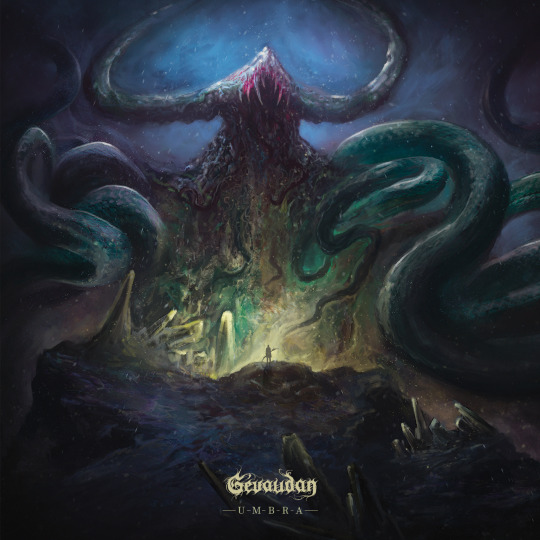
Album Art by Erskine Designs
I love it when bands go for epic. With concept firm in hand, four-piece English progressive doomers GÉVAUDAN reveal a one-track 43-minute epic in 'Umbra' (2023), the band's second LP following the well-received 'Iter' (2019).
Some songs are written to get your body moving and your head banging, and so release a lot of energy in a short space of time. Other songs are written for the long-haul, supporting the unfurling narrative of a story old, grand, mysterious, and surprising.
Gévaudan's penchant for storytelling is worthy of the baffling tale of the Beast of Gévaudan itself, a puzzling corner of history three centuries past. This epic tale seems at times to characterize a carousing beast or the sorrowful cries of its victims or the brimming rage of loved ones headed into the forest to hunt the thing that is like a wolf, yet not a wolf.
Some hints of the band's intentions can be gleaned from the album title, umbra being the darkest place in a shadow. The piece begins with the unsettling scratch of dissonant guitar, like a cloud of electrified mist. Then comes the slow, deliberate thump-thump-thump of the drums. The first doom riff and sorrowful verse emerges:
I’m waiting in the dawn light, clawing, tongue like dirt
Bleeding wounds that unwind, nails worn through
Screaming, wordless prayer
For a voice this plaintive, you'd have to go to Rainbo from Portland, Oregon's Purification or The Wizard from the late, great Pilgrim. There is genuine mourning here, with words reminiscent of the downcast prayers of King David. Like the Psalmist, the eyes of lyricist Adam Pirmohamed seem to lift heavenward, to the invisible, esoteric realms of God and the soul.
And I slumber, in His embrace
He cradles me to death
And I slumber, in His faith
He caresses, within my flesh
You may wonder how to take the words, just reading them at face value, but Adam has a way of convincing you of them on an intuitive level, such is the sincerity and relatability of his singing. Meanwhile, guitarist Bruce Hamilton gives release to the moment with a dazzling heavy metal solo that does some singing of its own.
When Adam returns to the mic, it is with conviction, and the vocal style becomes considerably more bold.
And I slumber, in His embrace!
And I slumber, in His faith!
There follows at 12:43 a period of the sublimest peace, with the airy ambience of pleasant dreams, free from the burdens and cares of this life. In a note from the band, they reveal that the song is about battling depression, with strong Lovecraftian themes (see below).
A third section surfaces at 18:32, with the guitar strumming a triumphant theme and the rhythm section of Andy Salt (bass) and David Himbury (drums) supplying a lofty heartbeat. Adam's singing seems to embrace sunlight and blue skies following the sullen clouds of the first act. At 21:51 a whirling, climbing solo from Bruce, charged with grit and determination.
There is something vaguely Medieval about the riff we return to at 23:03, as though it were ruminating on past sins or future worries. Then at 23:40 bliss enters in the form of a psychedelic guitar set against noodling bass and the gentle tapping of drums and cymbals. The stern riff returns, though it seems to be right at home with its jazzier counterpart.
Then at 25:05 the mood shifts back to the depressive air of the start, and it might seem like defeat -- back to the status quo of gloominess and melancholy. But something has changed. There is reflection and a sense of perspective about the state of things, and an optimistic spirit rises above the morass.
I’m waiting in the dawn light
Screaming, euphoria
Sightless woodland
Breathless blood
The presence of the synth gives it an otherworldly flare. Then at 32:52 piano, bass, and voice take us to the water's edge for a beautiful song within a song. It might have ended there, but the full band returns at 35:53 with wailing guitar and damning chords to truly finish the piece.
Standing at my hearth, I am showered with gold
Strong foundations, I am king, I am known
Growing inside, fearless soul of mine
Brightest eyes, reflecting through mirrors
Now, as I mentioned, this is inspired by Lovecraft so there could be something stranger, more sinister afoot than I am aware of. I won't spoil those last four lines of the song (beginning at 38:21), but they may leave you questioning whatever you believed about the whole ordeal to begin with. I love the dark, droning synth that takes us into the void at the record's conclusion.
And with that, Gévaudan have created something unexpected and brilliant in Umbra. The album releases this weekend on vinyl, compact disc, and digital formats (pre-order here). Stick it on a playlist with Neurosis, Serpent Venom, Purification, Age of Taurus, and Pilgrim.
Give ear...
Umbra by Gévaudan
A Letter From The Band
We’re delighted to provide an exclusive stream of our second full-length album, Umbra, in partnership with Doomed & Stoned. This has been a while in the making, and we’re really excited to finally be releasing our most ambitious record to date, seeped in grandiose and epic doom.
Our new album, 'Umbra' (2023), evolved from the depths. Through a single 43-minute concept, it explores depression through the eyes of Eldritch horror, culminating in the unrelenting shadow that’s imparted on its sufferer -- a battle of light, stalked by darkness. As you may have come to expect from Gévaudan, this is monolithic, progressive, and highly emotive doom.
It was late 2020 when the first riffs for Umbra appeared in the studio. We felt we’d really found our niche through our debut, ‘Iter’ (2019), and made a conscious decision that our next record was going to take some of the more epic elements even further. Since our inception in 2013, we’d had a strong desire to write a concept album - something vast and atmospheric. It felt like the appropriate time to embark on the piece and see how our sound would translate onto a 40+ minute canvas for the next album.
Our writing process took on a far more live and collaborative approach. Whilst riff-master-general, Bruce, continued to bring riffs into the studio which we adopted, refined, and worked into fully formed ideas. We also took more time to jam and evolve parts, and created more in the room collaboratively. This helped to fully shape the progression and tonal shifts we wanted to achieve.
Lyricist and vocalist Adam has always taken the lead on the thematics. When thinking of concepts for the album, we wanted to take a different approach than usual. We’ve covered a lot of fantasy, history, and the occult; and whilst we didn’t want to stray too far from that, we wanted to write something with more of a personal and relatable element.

At the time, Adam was managing a bout of depression and kind of fell naturally into writing about how they were feeling -- almost an indescribable and ominous feeling, a sense of something looming. From that feeling it felt instinctive to use themes and ideas of Eldritch Horror as an allegory for depression and distress, and it was rewarding to write about a relatable topic whilst still staying true to our known themes and tones.
An important part of our evolution on this album is the introduction of piano and synth. They have extended the layers and palettes we can play with and have allowed us to explore different textures and writing approaches.
As part of the completely immersive concept approach, the cover art was another key ingredient. The impressive cover artwork has been developed by Erskine Designs. Conceptually and tonally, it’s the perfect accompaniment of the aforementioned themes.
The dynamics of our song writing have always been a key ingredient to our musical approach, and we were fortunate to have the opportunity to work with producer and engineer Mike Exeter in the studio again.
Finally, we’re really excited to be working with Meuse Music Records on this release. They have been incredibly supportive in bringing our vision to life on physical formats, and are a really great team to be collaborating with.
Please sit back, lower the lights, and crank up the volume to indulge in this epic musical journey.
Follow The Band
Get Their Music
#D&S Debuts#Gévaudan#England#UK#doom metal#progressive doom#epic doom#heavy metal#Meuse Music Records#HeavyBest2023#D&S Reviews#Doomed and Stoned
2 notes
·
View notes
Photo

PATRIMOINE | Un nouveau Musée du Gévaudan fait la part belle à la bête ➽ https://bit.ly/3D6vcYh À Mende en Lozère, le nouveau Musée du Gévaudan retrace l'histoire de cette province d'Ancien Régime en faisant la part belle à la « bête » qui a terrorisé la France de Louis XV
1 note
·
View note
Text



134 notes
·
View notes
Text

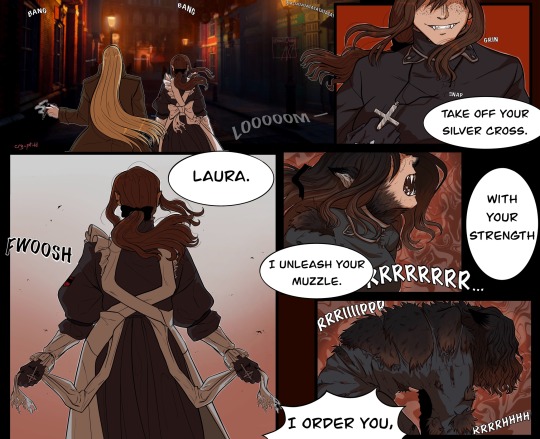

Attacks in London.
#it’s read left to right and up to down#hellsing#sir integra#laura chastel#hellsing oc#my art#comic#shaded#finished comic#the cats out of the bag baby!!!!!#(or the wolf???)#I’m so proud of this one. over 30h of work#look at them. she’s having the time of her life#millennium#cw blood#cw body horror#werewolf#if you make a few google searches on the beast of gévaudan you understand a LOT about Laura#fanart#you can’t see what the soldiers say bc of the quality but they’re yelling ‘siehe hin!!’ ‘over there!!’ ‘hellsing!!!’#also. powerwolf reference
301 notes
·
View notes
Text
Jean-Jacques has such a funny energy as a character. He's got so much going on at once. He's just a sweet little guy that cooks and cleans. He kills the same people over and over every day. He's made two friends in his entire life and blushes at the offer to shake hands. He's violently jealous and protective over his friend/partner. He turns into a giant wolf. He licked a dude's face. The wolf thing is not related to the face licking. He's over 100 years old, but he spends all his time with someone over 300 years old, so he still gets called a child on the regular.
Nobody is doing it like him.
#also he's debatedly a cannibal#but anyway I've been rereading the Gévaudan arc#and so very much enjoying my boy JJ#Chloé too. but I've always loved her whole thing#whereas JJ is just now really hitting me w a new love wave#vnc#vanitas no carte#the case study of vanitas#Jean-Jacques Chastel
291 notes
·
View notes
Text








Vanitas of the Blue Moon
#Vanitas of the Blue Moon#clan of the blue moon#The Case Study of Vanitas#Sōgetsu no Kyūketsuki#Vanitasu#luna the case study of Vanitas#jun mochizuki#Malnomen#les memoires de vanitas#vanitas#vanitas anime#vanitas no carte#the book of vanitas#Parade of Charlatan#Beast of Gévaudan#manga#anime#vampire anime#vampire of the blue moon
191 notes
·
View notes
Text

My partner is an aficionado of La Bête du Gévaudan and asked me to make a print a while ago, so I tried doing a really rough-and-ready, crusty-old-woodcut design based off a few different 18th century illustrations of the beast.
#linocut#relief print#blockprinting#printmaking#la bête du gévaudan#the beast of gevaudan#on this theme: we watched le pacte des loups last year and it was absolutely atrocious#(EXCEPT for you mark dacascos you're an icon)
15 notes
·
View notes
Text

Waterfall by Nasbinals, Gévaudan region of southern France
French vintage postcard, mailed in 1930
#gvaudan#historic#gévaudan#photo#briefkaart#vintage#region#southern#sepia#nasbinals#photography#waterfall#carte postale#postcard#mailed#postkarte#france#postal#tarjeta#ansichtskarte#french#old#ephemera#postkaart#1930
20 notes
·
View notes
Text


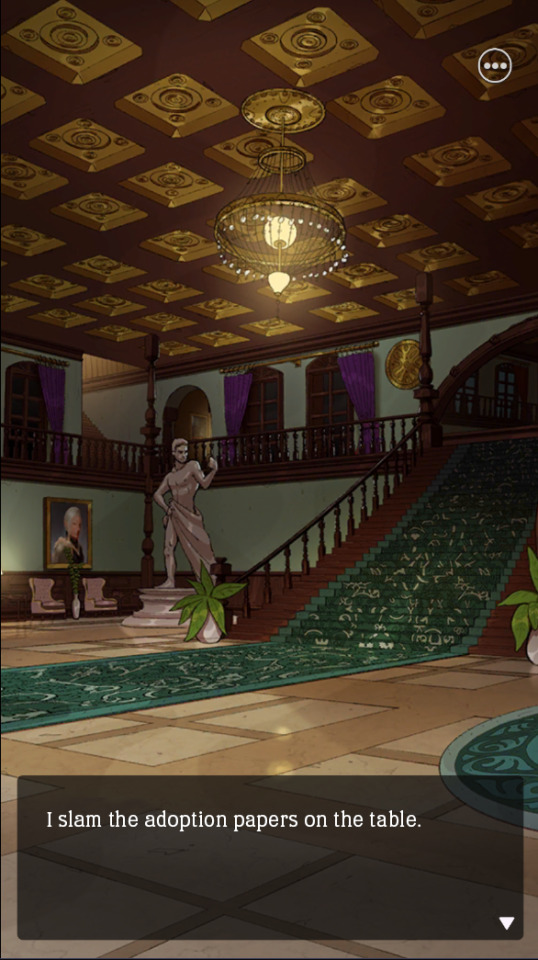
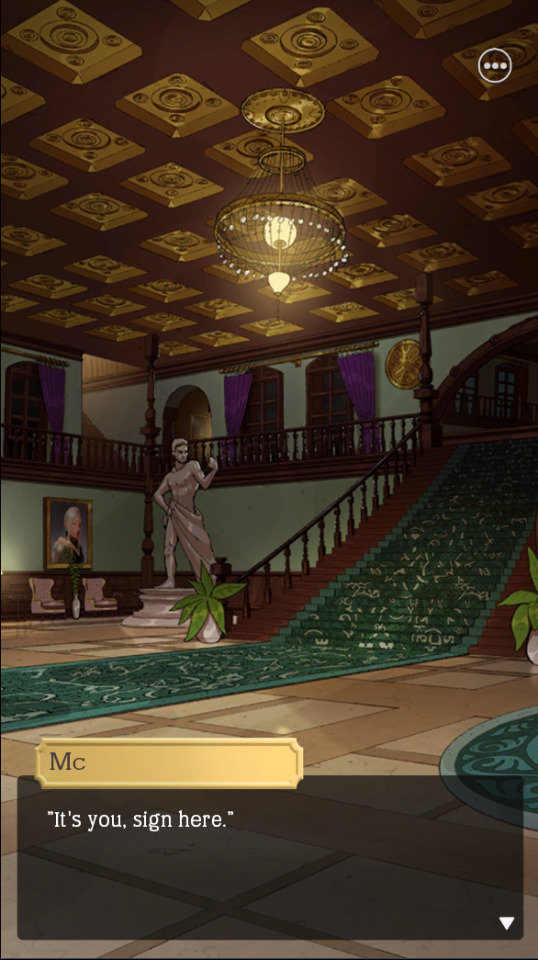
Took a little break from the Arcana hell
so have some monster men
#monster manor fictif#monster manor#fictif#fictif meme#casimir gévaudan#casimir gevaudan#monster manor rainier#incorrect quotes#fictif incorrect
56 notes
·
View notes
Text
#🎻#powerwolf#bête du gévaudan#beast of gévaudan#call of the wild#power metal#idc the french version is better deal with it#sayu.mp3
10 notes
·
View notes
Text

Beast of Gévaudan
In the mid 18th century women and children were found torn apart, dismembered, or decapitated in the quiet French province of Gévaudan. These were the first of nearly a hundred attacks perpetrated by a mysterious animal dubbed as the Beast of Gévaudan.
From 1764 to 1767, in the historical region of Gévaudan, located in southern France, and in adjacent areas, about one hundred children, youths, and women were killed by a so-called “Beast”. Numerous other humans survived the attacks, many of them seriously injured. The series of attacks has been confirmed by a great variety of historical documents and is not called into question by scientists.
Historians claim that wolves, or a hybrid of a wolf and a domestic dog, had attacked the victims; the “hybrid-assumption” is based on the description of a canid, shot in June 1767, that was said to have strange morphological characteristics. However, a critical evaluation of historical texts, including the publications of the French abbots François Fabre and Pierre Pourcher, revealed that neither this animal, nor any other wolf killed in Gévaudan, had anything to do with the attacks of the Beast.
Descriptions of the time vary, and reports may have been greatly exaggerated due to public hysteria, but the Beast was generally described as a wolf-like canine with a tall, lean frame capable of taking great strides. It had an elongated head similar to that of a greyhound, with a flattened snout, pointed ears, and a wide mouth sitting atop a broad chest. The Beast’s tail was also said to have been notably longer than a wolf’s, with a tuft at the end. The Beast’s fur was described as tawny or russet in colour but its back was streaked with black and a white heart-shaped pattern was noted on its underbelly.
About 95 percent of the carnivore attacks on humans in Gévaudan during the years 1764 to 1767 can be attributed to that single animal that was referred to as la bête: The Beast. There is no doubt that the remaining attacks were executed by rabid and non-rabid wolves. Wolves were a common species at that time and therefore easily recognized by the rural population.
The Beast of Gévaudan committed its first recorded attack in the early summer of 1764. A young woman named Marie Jeanne Valet, who was tending cattle in the Mercoire forest near the town of Langogne in the eastern part of Gévaudan, saw the Beast come at her. However, the bulls in the herd charged the Beast, keeping it at bay. They then drove it off after it attacked a second time. Shortly afterwards the first official victim of the Beast was recorded: 14-year-old Janne Boulet was killed near the village of Les Hubacs near Langogne.
Throughout the remainder of 1764, more attacks were reported across the region. Very soon terror gripped the populace because the Beast was repeatedly preying on lone men, women, and children as they tended livestock in the forests around Gévaudan. Reports note that the Beast seemed only to target the victim’s head or neck regions.
On January 12, 1765, Jacques Portefaix and seven friends were attacked by the Beast. After several attacks, they drove it away by staying grouped together. The encounter eventually came to the attention of King Louis XV, who awarded 300 livres to Portefaix and another 350 livres to be shared among his companions. The livre was the currency of Kingdom of France and its predecessor state of West Francia from 781 to 1794. The king also directed that Portefaix be educated at the state’s expense. He then decreed that the French state would help find and kill the Beast.
The killing of the creature that eventually marked the end of the attacks is credited to a local hunter named Jean Chastel, who shot it at the slopes of Mont Mouchet, now called la Sogne d’Auvers, during a hunt organized by a local nobleman, the Marquis d’Apchier, on June 19, 1767.
29 notes
·
View notes
Note
The Beast of Gévaudan (Puppet History's version) as an avatar of The Hunt?

7 notes
·
View notes
Photo

Beast of Gévaudan
In the mid 18th century women and children were found torn apart, dismembered, or decapitated in the quiet French province of Gévaudan. These were the first of nearly a hundred attacks perpetrated by a mysterious animal dubbed as the Beast of Gévaudan.
From 1764 to 1767, in the historical region of Gévaudan, located in southern France, and in adjacent areas, about one hundred children, youths, and women were killed by a so-called “Beast”. Numerous other humans survived the attacks, many of them seriously injured. The series of attacks has been confirmed by a great variety of historical documents and is not called into question by scientists.
Historians claim that wolves, or a hybrid of a wolf and a domestic dog, had attacked the victims; the “hybrid-assumption” is based on the description of a canid, shot in June 1767, that was said to have strange morphological characteristics. However, a critical evaluation of historical texts, including the publications of the French abbots François Fabre and Pierre Pourcher, revealed that neither this animal, nor any other wolf killed in Gévaudan, had anything to do with the attacks of the Beast.
Descriptions of the time vary, and reports may have been greatly exaggerated due to public hysteria, but the Beast was generally described as a wolf-like canine with a tall, lean frame capable of taking great strides. It had an elongated head similar to that of a greyhound, with a flattened snout, pointed ears, and a wide mouth sitting atop a broad chest. The Beast’s tail was also said to have been notably longer than a wolf’s, with a tuft at the end. The Beast’s fur was described as tawny or russet in colour but its back was streaked with black and a white heart-shaped pattern was noted on its underbelly.
About 95 percent of the carnivore attacks on humans in Gévaudan during the years 1764 to 1767 can be attributed to that single animal that was referred to as la bête: The Beast. There is no doubt that the remaining attacks were executed by rabid and non-rabid wolves. Wolves were a common species at that time and therefore easily recognized by the rural population.
The Beast of Gévaudan committed its first recorded attack in the early summer of 1764. A young woman named Marie Jeanne Valet, who was tending cattle in the Mercoire forest near the town of Langogne in the eastern part of Gévaudan, saw the Beast come at her. However, the bulls in the herd charged the Beast, keeping it at bay. They then drove it off after it attacked a second time. Shortly afterwards the first official victim of the Beast was recorded: 14-year-old Janne Boulet was killed near the village of Les Hubacs near Langogne.
Throughout the remainder of 1764, more attacks were reported across the region. Very soon terror gripped the populace because the Beast was repeatedly preying on lone men, women, and children as they tended livestock in the forests around Gévaudan. Reports note that the Beast seemed only to target the victim’s head or neck regions.
On January 12, 1765, Jacques Portefaix and seven friends were attacked by the Beast. After several attacks, they drove it away by staying grouped together. The encounter eventually came to the attention of King Louis XV, who awarded 300 livres to Portefaix and another 350 livres to be shared among his companions. The livre was the currency of Kingdom of France and its predecessor state of West Francia from 781 to 1794. The king also directed that Portefaix be educated at the state’s expense. He then decreed that the French state would help find and kill the Beast.
The killing of the creature that eventually marked the end of the attacks is credited to a local hunter named Jean Chastel, who shot it at the slopes of Mont Mouchet, now called la Sogne d’Auvers, during a hunt organized by a local nobleman, the Marquis d’Apchier, on June 19, 1767.
64 notes
·
View notes
Text
I think Monster Manor is my favorite story on Fictif but it sucks so bad it's not finished. It had sooo much potential had it not been rushed then straight up abandoned. It's like Beauty and the Beast minus the Stockholm syndrome and you can decorate a silly house.
:( PLUS the fact there was gonna be another character but we have no clue on what they are or what impact they could've had to the story.
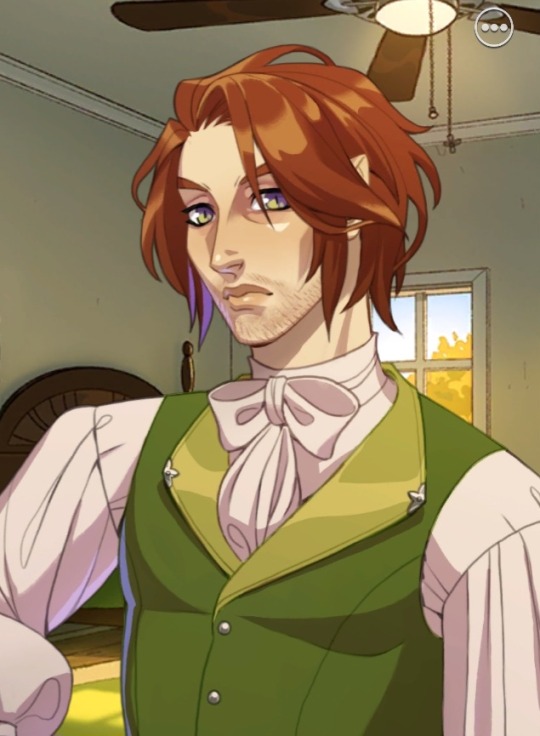
HE deserves BETTER. ISTG if I had enough motivation and visual novel making skills I'd make the rest of it myself.
7 notes
·
View notes